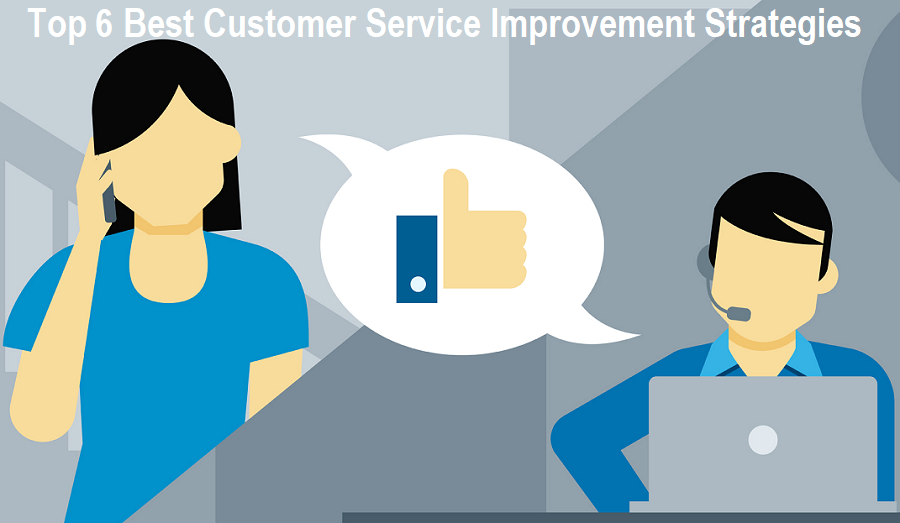The company’s customer service can either make or break its reputation. Your customer service employees are actually the face of your company, the skill, and quality of support they provide will define your customers’ experiences. All generations of people, and especially the Millennials, are greatly influenced by their peers and rely on their experiences with certain products or services that they’re currently interested in. Their perception of a business is shaped by what they hear from family and friends.

Thus, the best chance for a company’s survival and progress is improving their customer service support. Availability and speed of service are universal benchmarks, and you must understand what is important to your customers. This is what you should consider doing to improve your business customer support.
Top 6 Best Customer Service Improvement Strategies for Businesses
1. Expand Support Hours
Your customer service support should be available to your customers, even to those working longer and more unusual hours. Maybe you don’t need a 24/7 support model, but you should ensure that the self-service options available in late hours are enough to provide support when your support lines are off.
2. Empathetic Employees
Empathy is a big plus in successful communication, and one of the best traits that a customer-facing employee could have. Employees are naturally able to empathize with the customers if they have had similar experiences. For example, a young mother with a fussy child flying in an airplane will find those flight attendants who are mothers themselves most helpful.
Empathetic employees should also be discouraged to use phrases that often confuse customers and suggested to use ones that will make interactions with customers easier and more successful (this is called language engineering). As for modern customers, they aren’t looking for a formal style of interaction from service providers, but rather a “peer to peer” style of communication.
3. Better Communication Tools
The quality of a job performed depends on whether or not the ones performing it have the right tools. Provide better communication tools to your customer service managers and customer-facing employees, so they could provide the best possible customer service. Otherwise, if they don’t have meaningful analytics and good phone lines, or they’re fighting an outdated CRM, you can’t expect them to be outstanding.
4. Real-Time Communication Model
When it comes to supporting customers, these communication models represent the gold standard. Real-time (face-to-face, video chat, and telephone communication) and near-real-time (messaging, live chat) communications are the most effective ones and should be central to your customer support model.
That said, you might think that the necessary technology will cost you an arm and a leg, but that’s far from the truth. With just one software, you can get all the tools for real-time communication, including the telephone. The solution lies in the complete integration of the VoIP phone system into your workplace. The app can be installed on both the computers and mobile devices, providing your employees with a range of smart features to accommodate the demanding clientele, be it via phone calls, live chats, or video calls. It’s the all-in-one service for a fraction of the price.
5. Mystery Shopping
In order to see how your business’ customer support really works, mystery shop/chat/tweet/email/call, as if you were the customer. Be prepared that what you find may or may not be what you’ve expected. If you don’t like the way your customer service works, realize that it’s better that you’ve found it out by yourself rather than from enraged customers in the future.
6. Outsource for Help
By doing research and implementing your findings, you can go a long way on your own by following the rules and guidelines on self-deployment. However, nothing can match the help of an experienced professional who can guide and watch over your customer-facing employees and transfer their knowledge that they’ve accumulated over the years in the business.
If you’re not ready to outsource for training professionals, then outsource for experienced employees. In that case, you could utilize a 24/7 customer support mode, free yourself from these responsibilities to focus on the business, and improve quality in customer service delivery. Outsourcing your customer support leads to increased productivity and reduced cost, which will benefit your business overall and in the long run.
Conclusion:
It’s always best to go beyond the call of duty, so don’t wait to hear from irate customers how your customer support is failing to provide the necessary help. Whether you’ve just launched a startup or have been in the industry for some time, there’s always room for improvement in the sector of customer support. Your customers deserve your gratitude, assistance, and respect, and they expect it as well.







COMMENTS